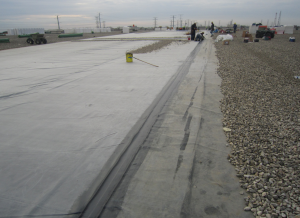
PHOTO 5: The new EPDM membrane over new insulation (left) is in the process of being ballasted. The “night tie-in” is easily accomplished with seam tape and self- adhering cover strips.
In 2006, at Hawthorne Elementary School South, Vernon Hills, Ill., I restored a ballasted EPDM roof that I designed in 1985 and observed, full- time, while it was installed in January 1986 (see Photo 1). The restoration included lap-seam enhancement with self-adhering cover strips, target patch installation at all roof drains, re-flashing of all roof curbs and penetrations, re-flashing the gravel-stop flange, and removal and replacement of eight sky- lights (see photos 2 and 3). The restoration cost 52 cents per square foot, or $52,000, versus the $400,000 cost to remove and replace the roof system. This restored roof is still performing today.
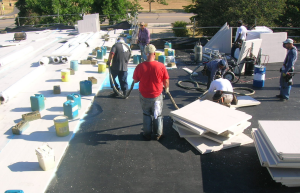
PHOTO 6: On this school, the existing EPDM roof membrane is being utilized as a vapor retarder. After cleaning, two layers of insulation are being installed in full- coverage spray foam. The amount of new insulation above the existing membrane was determined by dew-point calculations.
During my RCI presidency, my motto was “Learn, Share, Grow”; thus, I have shared all my restoration details on the Washington, D.C.-based EPDM Roofing Association’s website.
ROOF-COVER REMOVAL, ENHANCED WITH ADDITIONAL INSULATION
As many of the new age roof covers were membrane roof covers, a possibility presented itself that was not previously perceived: removing only the roof cover and leaving the existing insulation in place. We have recently completed and currently are bidding several such projects.
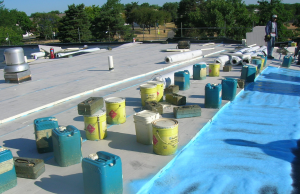
PHOTO 7: The blue spray-foam adhesive applied to the existing EPDM is allowed to rise prior to setting the new double-coated, fiberglass-faced, mold-resistant insulation. To ensure positive embedment into the adhesive and bonding, the insulation is weighted in place. The author’s spec requires 5- to 35-pound weights per board for a minimum of five minutes.
EXISTING ROOF MEMBRANE AS VAPOR RETARDER
Because of the long-term aging of membrane roof covers, they have the potential to be left in place and reused as a vapor retarder. A dew-point analysis will determine the amount of insulation required above the roof cover; in the Chicago area, it is 5 inches installed in two layers of 2 1/2 inches (see Figure 2 and photos 6 and 7). Certainly any minor deficiencies in the existing membrane need to be repaired; roof drains extended (see Photo 8) and roof edges often modified. However, the benefits are great: reduced costs, minimization of interior disturbance, less material to the landfill and enhanced thermal performance.
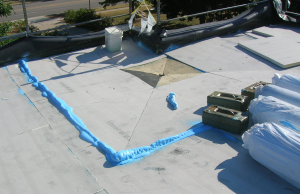
PHOTO 8: The roof drains were extended with the new reversible collar pinning the existing EPDM to maintain the integrity as a vapor retarder. A 1/2-inch-per-foot tapered insulation sump is being installed, tapering the top layer of insulation to the new roof-drain extension.
MEMBRANE REMOVAL, INSTALLATION OF NEW ROOF COVER
The IECC, or International Energy Conservation Code, requires that if you expose the insulation you must increase the insulation to achieve the required thermal R-value. Many new age roofs have considerable insulation and the potential may exist to remove the existing roof membrane and install a new roof membrane. Prudency suggests that at least a minimal layer of insulation or cover board be installed.
Although all of these examples may be options, the licensed roof designer must use professionalism to make prudent engineering decisions; do what is right for the client; and meet all code requirements, including wind-uplift resistance and roof-edge sheet-metal compliance (ANSI-SPRI RP1).
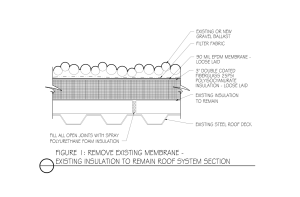
Figure 1 (click to view larger)
PHOTOS: HUTCHINSON DESIGN GROUP LLC
MORE FROM HUTCH
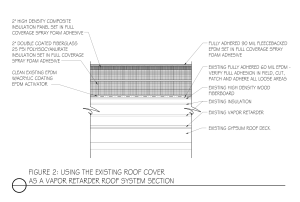
Figure 2 (click to view larger)
“Roofs Are Systems”, January/February 2014, page 52
“Roof Decks”, March/April 2014, page 54
“Substrate Boards”, July/August 2014, page 52
“Vapor Retarders”, September/October 2014, page 52
“Insulation”, November/December 2014, page 50
“Wind-damaged Roof Systems”, January/ February 2015, page 60
“Cover Boards”, September/October 2015, page 60
“The Roof Cover”, November/December 2015, page 42


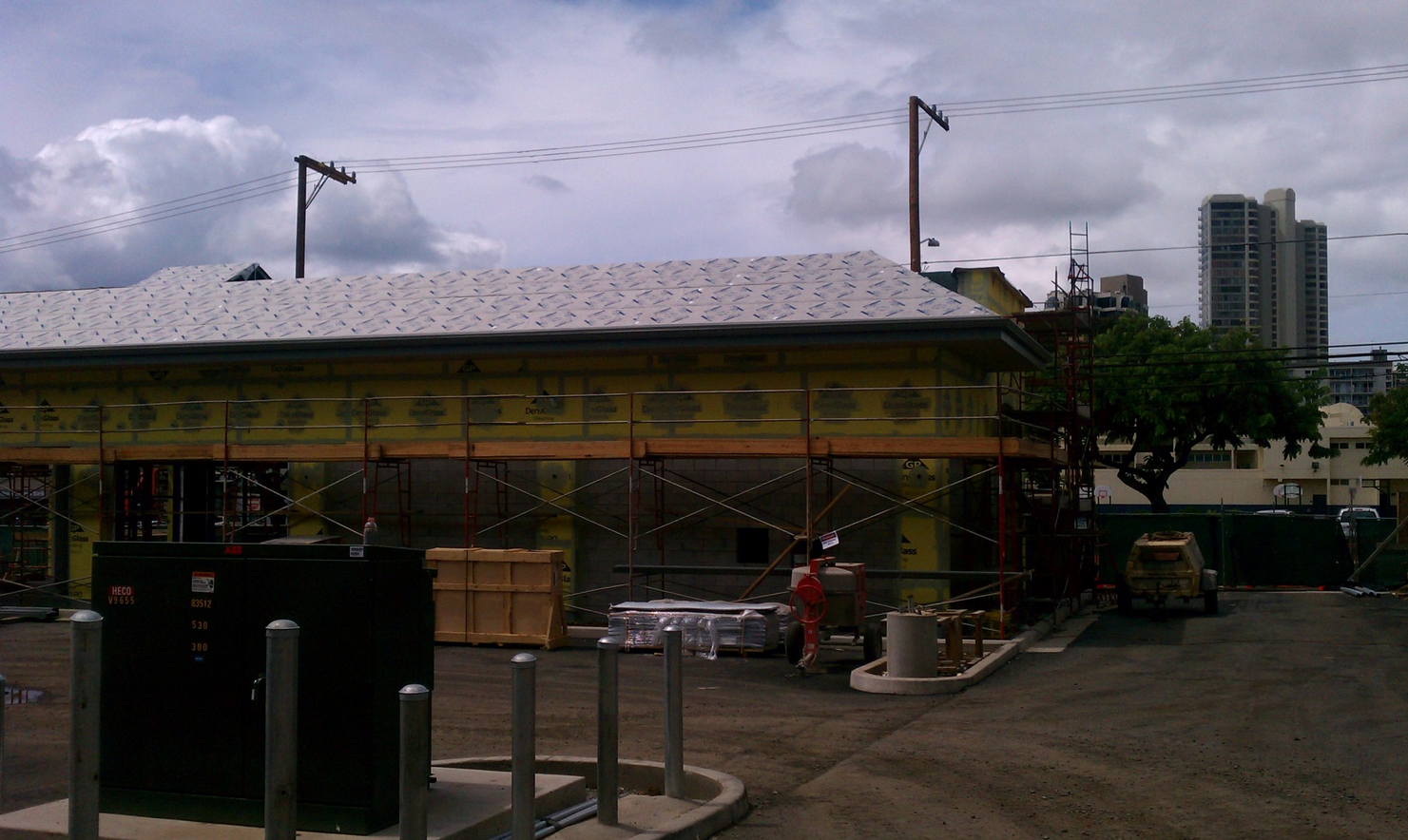
Be the first to comment on "With Today’s ‘New Age’ Roofs, Removing All System Components May Not Always Be Required or in the Clients’ Best Interest"